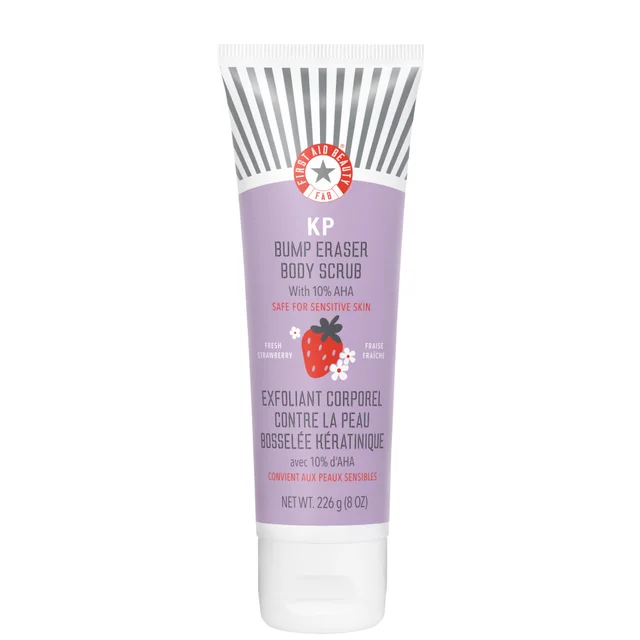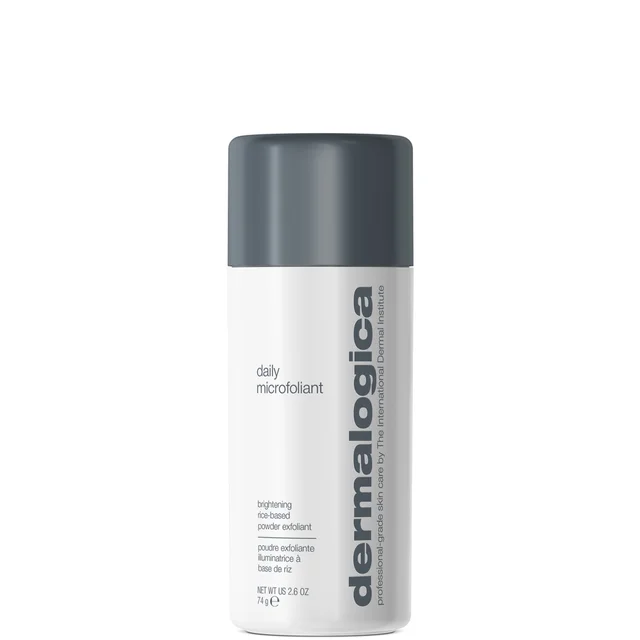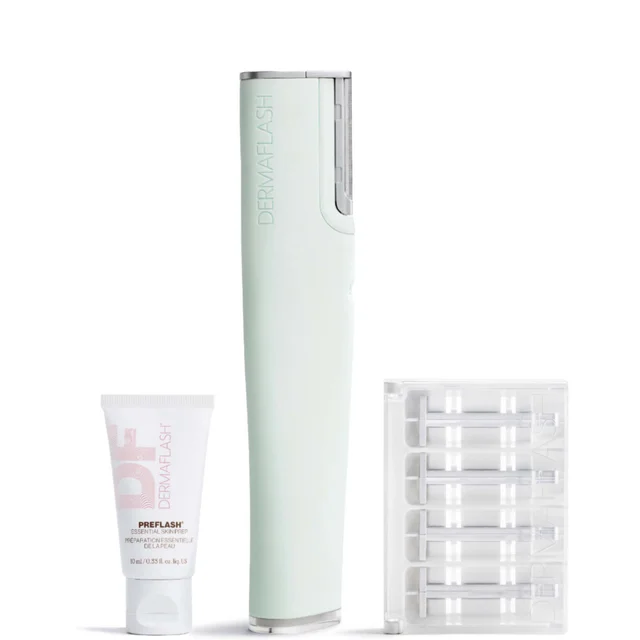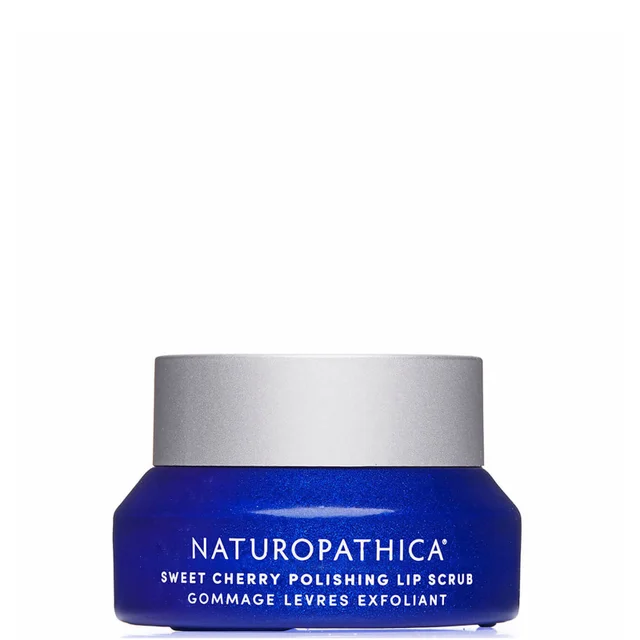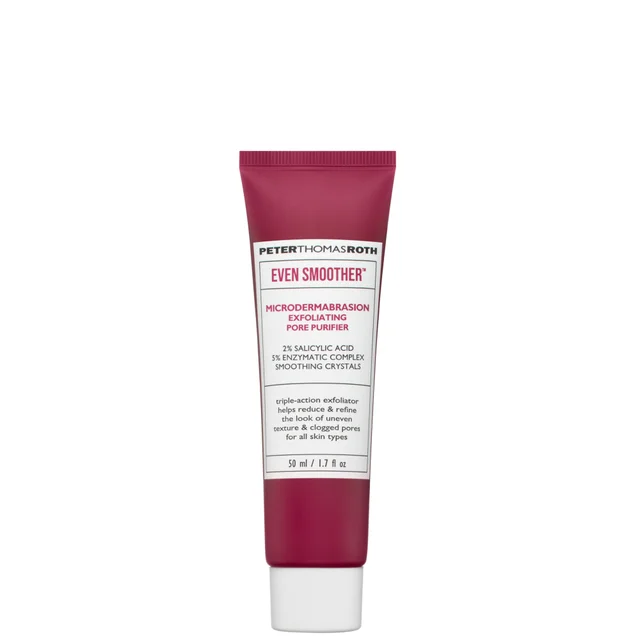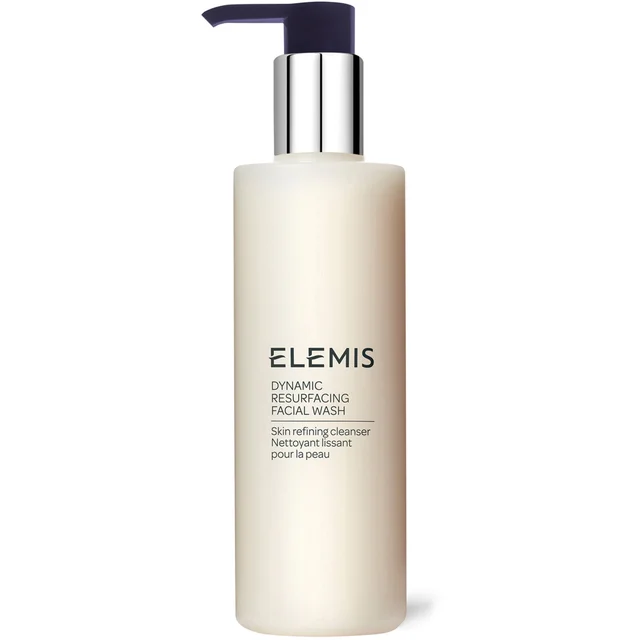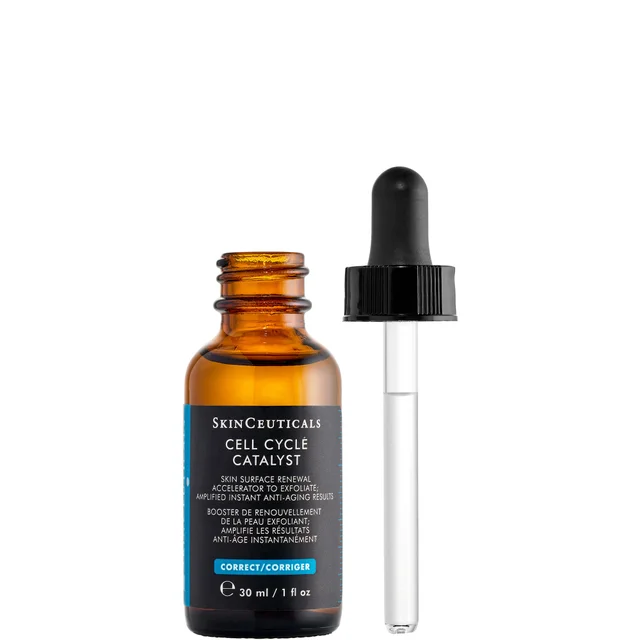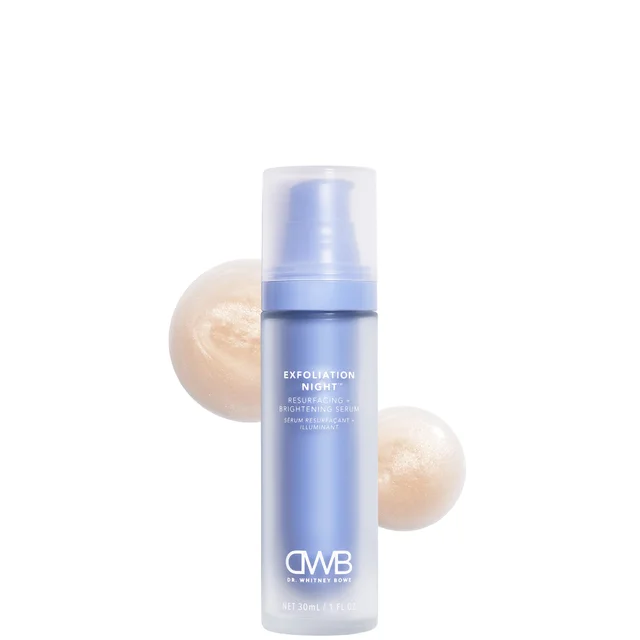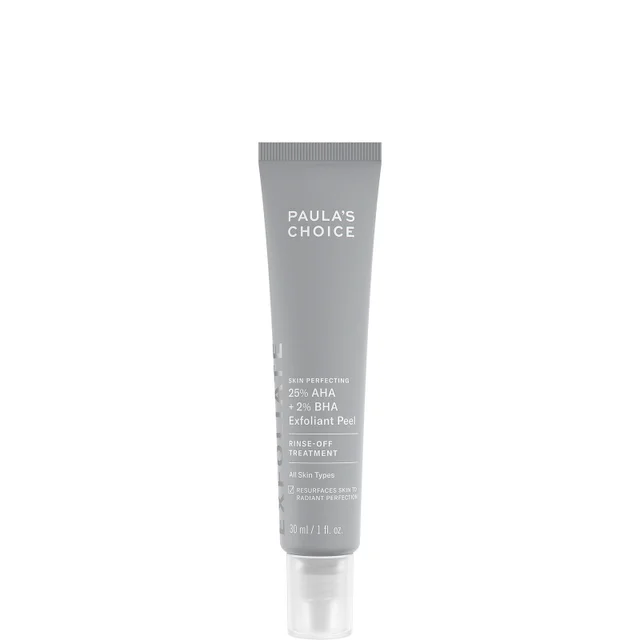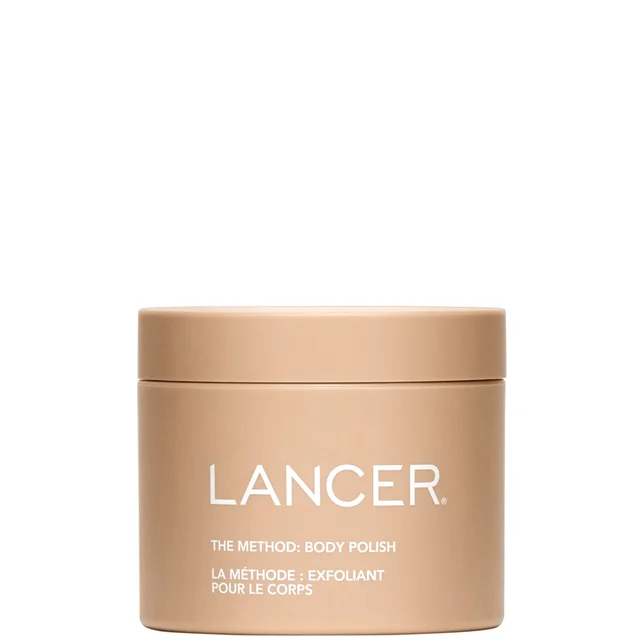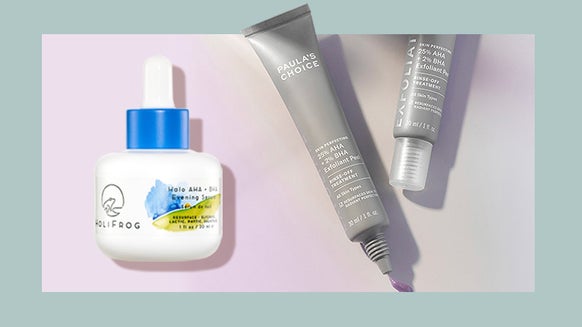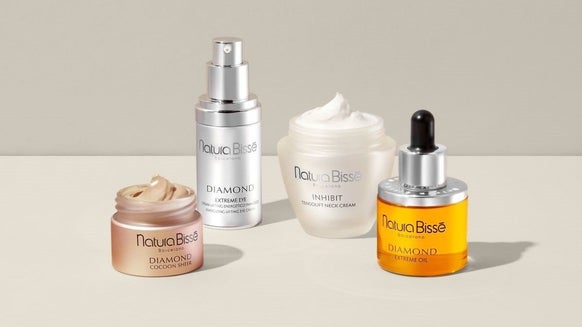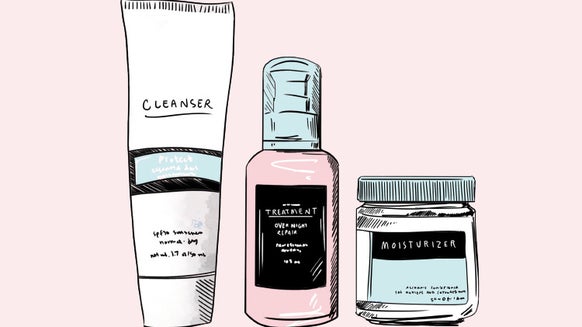How to Exfoliate Your Skin Properly for a Smooth Complexion
There's no straight road to getting smooth, glowing, healthy skin, and even with all the newest treatments and fanciest skin care products, there's something to be said about the tried-and-true power of exfoliation. Exfoliation is still one of the best ways to improve the skin's texture and tone. But how to exfoliate skin the right way and with the right product is key to seeing success with the staple skin care step. Consider this your ultimate exfoliation guide, packed with expert tips to get the skin you want.
Meet the Expert
- Dr. Ashley Magovern – Board-certified dermatologist and member of Dermstore's Medical Advisory Board
In this Article
- Why Is It Important to Exfoliate?
- Key Benefits of Exfoliation
- How to Exfoliate Safely
- How to Exfoliate with a Physical Exfoliant
- How to Exfoliate with a Chemical Exfoliant
- How Often Should You Exfoliate?
- FAQs
- The Bottom Line
Why Is It Important to Exfoliate?
If healthy, glowing, glass skin sits on your wish list, you'll want to exfoliate it regularly. The skin is constantly repairing and replacing its skin cells, sometimes by regenerating new ones. However, that process needs some help to keep it efficient and on track. If you don't know how to exfoliate your skin at home, you can be left with layers of dead skin all over your face and body, instigating breakouts and leaving the skin looking dull, rough, and dry.
Key Benefits of Exfoliation
Exfoliating is an easy way to achieve brighter, smoother skin, but that's not all it does. Board-certified dermatologist and owner of Manhattan Dermatology, Dr. Ashley Magovern, says that exfoliation removes dead skin cells, which can brighten the complexion." It also helps unclog pores, keeping the skin blemish-free and improves the absorption of products, enhancing their efficacy, and promoting collagen production." Sticking to a regular exfoliation plan can also help fade age spots and make fine lines and wrinkles look less visible.
With fewer dead skin cells on the surface, there's less dullness and dryness, making the skin appear healthier and more glowy. Plus, regularly exfoliating the skin can also improve its health.
How to Exfoliate Safely
When it comes to safely exfoliating your skin, there are a few tips and tricks to keep it healthy. For starters, all skin types and tones are fair game when it comes to exfoliating. According to Dr. Magovern, it is good and important for all skin types to exfoliate. "If you have sensitive skin, start with more gentle forms of exfoliation, like enzyme products. In terms of AHAs, mandelic and lactic acids are usually more tolerable than glycolic acid."
You always want to start with clean skin before exfoliating. Dr. Magovern recommends first cleansing the skin with a gentle cleanser and lukewarm water. "Just make sure the water is not too hot since it can lead to irritation." With your exfoliator in hand, be gentle on your skin. One of the key factors to consider how to exfoliate skin effectively is how much pressure to use. You don't need to over-scrub the skin or be hard on it, especially if you use a scrub with beads or granules. "Also, don't push too hard," Dr. Magovern says, "since pushing too hard can lead to small tears in the skin."
If you use a physical exfoliant like a scrub, Dr. Magovern suggests gently rubbing it into the skin for several seconds with lukewarm water. "When using chemical exfoliants, following the product instructions is crucial, as some stronger formulations are designed to be rinsed off after a few minutes. Generally, start by applying a small amount to the skin. If you experience significant stinging or burning, rinse it off immediately and apply a soothing moisturizer." After exfoliating, it's important to moisturize the skin to help restore the skin barrier.
If you are new to exfoliating, ease into it and take things slow. “Give your skin a couple of days to adjust before trying again, and then gradually increase the duration. The goal with most chemical exfoliants is to leave the product on the skin to maximize its benefits, but it's important to build up tolerance slowly to avoid irritation,” Dr. Magovern says.
How to Exfoliate with a Physical Exfoliant
Physical (or manual) exfoliation involves scrubs, tools and brushes that manually slough off dead skin cells, Dr. Magovern explains. Any time some scrubbing action physically exfoliates the skin, it removes dead skin cells to reveal the fresh, new ones underneath. While some people prefer physical exfoliators over chemical ones, how to exfoliate the skin with a physical exfoliant properly comes down to the makeup of the scrub, the size of the exfoliating granules and their composition, or the scrubbing action that the tool provides. If it is too harsh for your skin, it may irritate and compromise the skin barrier, leading to breakouts, redness, and rashes. That's why it is crucial to know your skin type and what types of products suit it best
The Best Products for Physical Exfoliation
1. First Aid Beauty KP Bump Eraser Fresh Strawberry Body Scrub with 10% AHA
Body scrubs are effective for lifting away dead, dry, damaged skin cells, and this alpha-hydroxy acid-rich one acts like a secret weapon against keratosis pilaris (KP) and strawberry skin. Not only is the formula fast-acting, but it is effective while remaining gentle, making it a perfect shower must-have even for more sensitive skin.
2. SkinCeuticals Micro-Exfoliating Scrub
This scrub is the perfect facial exfoliator for decongesting clogged pores. It gives the skin a deep-down exfoliating cleanse without harming or compromising it. Plus, a lend of hydration, like glycerin and aloe leaf extract, helps to keep the skin cool and moisturized yet never stripped.
3. Dermalogica Daily Microfoliant
This award-winning rice-based powder gently exfoliates the skin, leaving it instantly smoother and brighter. Pour a little bit of the powder into the palm of your hand and activate it with water to let the exfoliator work its magic.
4. DERMAFLASH Luxe+ Advanced Sonic Dermaplaning and Peach Fuzz Removal
Dermaplaning is great for removing unwanted peach fuzz, but its mechanical exfoliation properties also work wonders to reveal fresh new skin cells. In just one use, you'll see instantly smoother, glowing, and healthier-looking skin.
5. Naturopathica Sweet Cherry Polishing Lip Scrub
Smooth, soft lips are easily obtained with a good lip scrub. This one gently smooths, softens and nourishes the lips and leaves them with a delicious cherry scent.
6. Peter Thomas Roth Even Smoother Microdermabrasion Exfoliating Pore Treatment
Although exfoliating crystals are the main star in the microdermabrasion pore-clearing treatment, it's also chock-full of salicylic acid to purify the pores and enzymes to remove impurities for smoother, clearer-looking skin.
7. Medik8 Pore Refining Scrub
Perfect for oily skin and congested pores, this deep exfoliating cleanser relies on natural jojoba grains to exfoliate the skin’s surface for skin that appears more refined and clarified.
How to Exfoliate with a Chemical Exfoliant
"Chemical exfoliation uses acids and enzymes to chemically dissolve and remove dead skin cells," says Dr. Magovern. Generally, extremely sensitive and acne-prone skin does well with chemical exfoliants since they are less likely to cause irritation than physical ones. "Common chemical exfoliants include AHAs, like glycolic, lactic, and mandelic acid, and BHAs, like salicylic acid, penetrate better into the pores and help clear out excess oil." Both AHAs and BHAs combine with the structural lipids in your stratum corneum (the outermost layer of your skin) and dissolve them so that the dead skin cells break away. "Common enzyme exfoliants include fruit enzymes like papaya or apple, which tend to be a gentler form of exfoliation."
The Best Products for Chemical Exfoliation
1. Elemis Dynamic Resurfacing Facial Wash
This gel-based, enzyme-powered face wash works hard to remove skin-dulling pollutants, dirt, and impurities for even, radiant-looking skin.
2. SkinCeuticals Cell Cycle Catalyst Exfoliating Booster Serum
Not all exfoliators need to be scrubs, and some, like this serum, are packed with skin-refining acids to promote cell turnover. By gently lifting away dead skin cells, skin appears smoother, more even in color, and with fewer lines and wrinkles.
3. Dr. Whitney Bowe Beauty Exfoliation Night Resurfacing + Brightening Serum
You can count on the chemical exfoliators in this clinically proven serum to resurface the skin overnight for a more luminous and smoother complexion.
4. iS Clinical Active Peel Treatment System
Designed for every other day use, this botanically based system gently resurfaces the skin, giving it a polished look while hydrating and rejuvenating it. Antioxidants provide a layer of protection for skin that remains balanced.
5. Dr Dennis Gross Alpha Beta Universal Daily Peel
One of the easiest chemical exfoliators to use, these two-step peels harness the power of glycolic and lactic acids to diminish the appearance of fine lines, wrinkles and hyperpigmentation while visibly reducing pore size for immediate and long-term anti-aging benefits.
6. Paula's Choice SKIN PERFECTING 25 AHA 2BHA Exfoliant Peel
A bevy of exfoliating acids, including salicylic acid and AHAs, come together in this facial peel, which exfoliates the skin while improving its texture and tone.
7. Kate Somerville ExfoliKate Intensive Exfoliating Treatment
Packed with fruit enzymes, lactic and salicylic acids, and a blend of skin-smoothing ingredients, this instant exfoliator clears clogged pores for fewer breakouts and clearer skin. It also lifts away dead skin cells so that the other products in your skin routine work more effectively.
8. Lancer Skincare The Method Body Polish
Dead, dry, dull skin doesn't stand a chance with this warming body polish. Physical exfoliators like bamboo stem powder, quartz crystals and chemical exfoliators create a smoother, more even complexion for soft, supple skin.
How Often Should You Exfoliate?
The key to getting good results with at-home exfoliation is not to overdo it. When it comes to how to exfoliate skin just enough, follow Dr. Magovern's skin type rule. Two to three times per week if your skin is oilier and once per week if your skin is more normal or dry. If your skin can tolerate more, you can increase the frequency." Since many of today's skincare products are formulated with gentle exfoliating agents, plenty are safe to use daily. "Stronger products should be used less often." Make sure to listen to your skin; if it becomes irritated and dry, Dr. Magovern recommends taking a few days off. "The goal is for your skin barrier to remain intact."
FAQS
Is it Better to Exfoliate on Dry or Wet Skin?
It depends on the type of exfoliator. Chemical exfoliators should be applied to dry skin and washed off as directed. Depending on the instructions, physical and manual exfoliators can be used on wet or dry skin.
Do I Need to Apply Anything After I Exfoliate?
Dr. Magoven recommends applying a hydrating serum (like one containing hyaluronic acid) and/or a moisturizer to protect the skin barrier.
The Bottom Line
Exfoliation is a key component of any good skincare routine and a must for healthy, glowing skin. How to exfoliate skin properly isn't hard or complicated but it does take an understanding of your skin to know what's best for it. While there's no right or wrong exfoliator, knowing which suits your skin well is the key to finding success with consistent results.

Elise Minton Tabin is an award-winning beauty journalist, editor, and beauty expert with more than 16 years of experience. She previously held the title of Executive Beauty Editor at NewBeauty magazine, where she reported on beauty, plastic surgery, anti-aging, health and wellness. She was also instrumental in the launch of the beauty supplement brand Hush & Hush. A self-professed beauty junkie and retinol and sunscreen pusher, Elise knows what’s new, what works and who’s the best to go for every procedure under the sun. Follow Elise on Facebook, Instagram, and on her beauty blog, elisetabin.com
